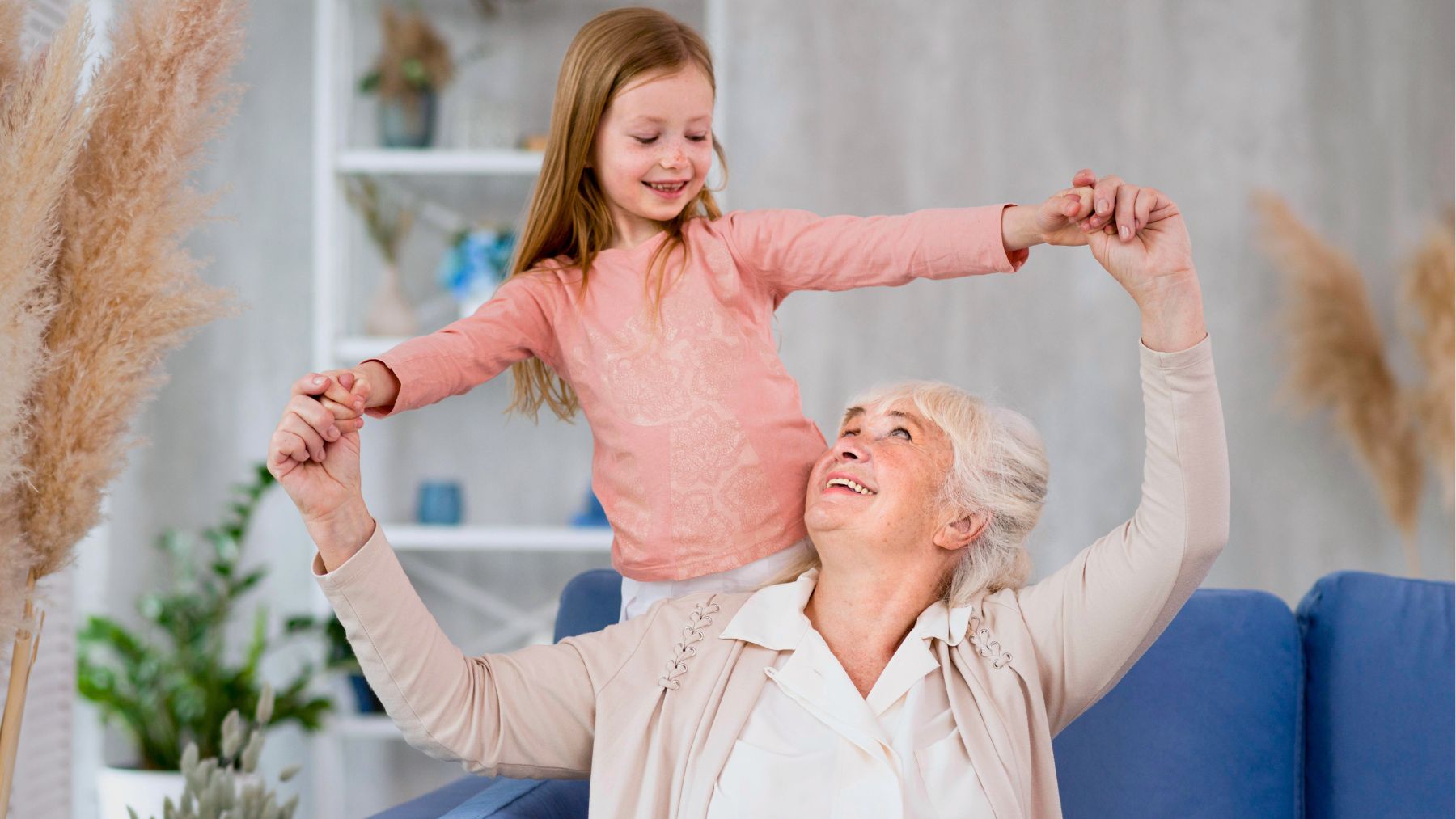For seniors over 70, staying socially engaged can have a big impact on their mental health. Besides social dance classes or volunteering, an activity that’s gaining attention for boosting emotional health, especially in older adults, involves connecting with younger generations.
Here, we’ll look at how intergenerational activities—programs that bring seniors and youth together—can help older adults feel valued, engaged, and fulfilled. We’ll cover what these activities look like, the benefits they offer, and some practical ways seniors can get involved, whether they live independently or in a senior living community.
Intergenerational activities for seniors: how they work
Intergenerational activities give seniors something many of them miss: a sense of purpose and connection. Years ago, it was normal for families to live close by, with grandparents, parents, and kids all in regular contact. Today, many families are spread out, and older adults—especially those living alone—can experience isolation, loneliness, and disconnection.
These programs bring generations together again. Whether it’s reading with a child, cooking a meal together, or planting in a garden, these moments foster mutual respect, joy, and learning. A report from Generations United found that these interactions can reduce depression, improve cognitive function, and increase physical activity among seniors.
What can seniors do with younger generations?
You don’t need to do something completely new to take part in intergenerational programs. These activities are built around everyday interests and skills. They’re easy to join and often deeply rewarding. Here are a few options that are commonly offered at senior living communities and through local organizations in the US:
- Reading and mentoring: Seniors can read with kids, help with schoolwork, or offer advice from personal experience. It builds trust and gives both sides something to look forward to.
- Day care visits: Some programs partner with local preschools, where seniors join in for crafts, storytelling, or playtime. These simple moments spark joy and create lasting bonds among both generations.
- Music and performance: Whether singing together or watching a student choir perform, music breaks barriers. They can share songs, instruments, or even write something new.
- Gardening projects: Working side by side in a community garden encourages conversation while keeping seniors active. They can teach kids how to care for plants while picking up a few tips themselves.
- Cooking together: Sharing recipes and preparing food can bridge generations quickly. Kids learn kitchen skills while seniors pass on traditions, creating lasting memories.
- Arts and crafts: Whether painting, building, or drawing, creative projects tend to bring people together naturally. These sessions are often more about the exchange than the outcome.
- Group meals and events: Monthly cookouts, dinners, or seasonal celebrations are a simple but powerful way to bring people of all ages together in a relaxed setting.
When seniors connect with younger people in these ways, it helps them fill a gap that no solo hobby can, while also stimulating young ones to learn from them a form a bond. For older adults, that connection can make all the difference in how appreciated and engaged they feel during their retirement years.

